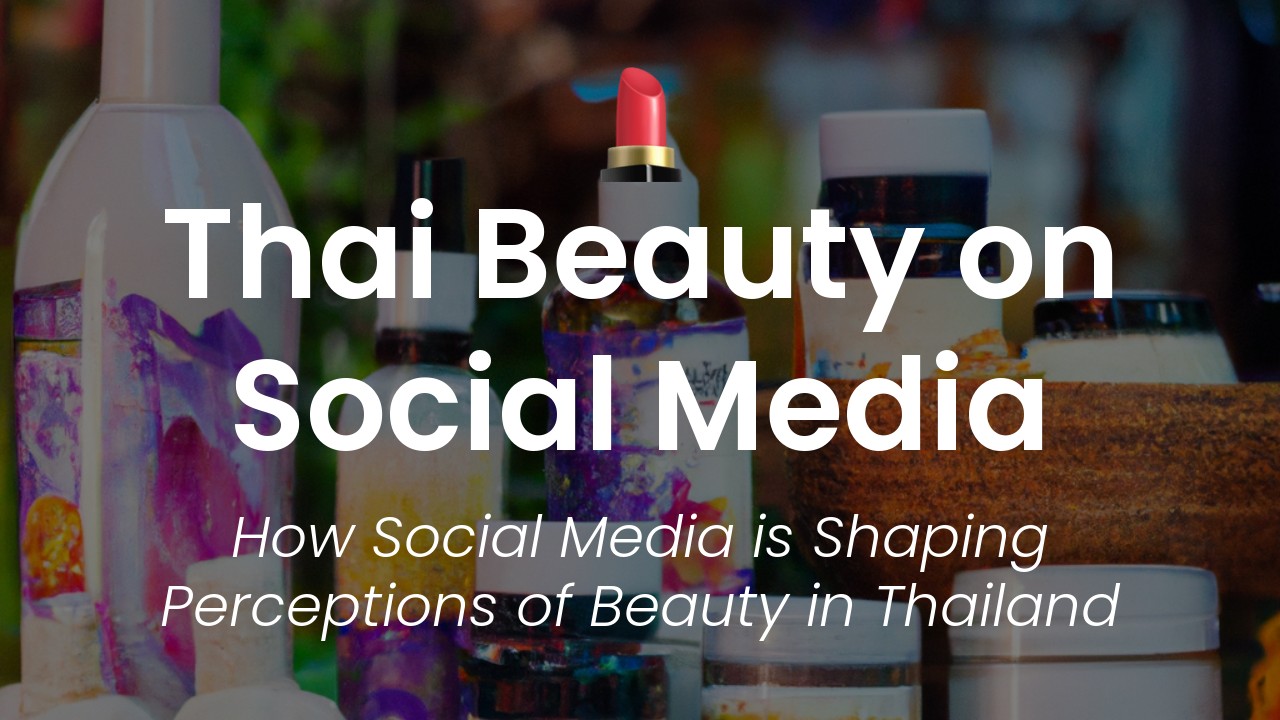As a Thai woman, I've always been fascinated by the beauty standards that exist within my country. For centuries, Thai women have been known for their unique elegance and grace, often being praised for their delicate features and porcelain-like skin. However, with the rise of social media, these beauty standards have evolved in new and unexpected ways.
Social media has given us a platform to express ourselves in unprecedented ways. We can share our thoughts and ideas, connect with others, and showcase our most attractive features. This has undoubtedly impacted the way we perceive beauty and, in turn, how we judge ourselves and others.
As someone who's passionate about Thai culture and tourism, I wanted to take a closer look at how these changing beauty standards are impacting the way Thai women view themselves. So, in this article, I aim to explore the complex relationship between Thai beauty standards and social media. From examining the history behind these beauty standards to discussing the pressure social media puts on young Thai women to maintain a certain image, my goal is to provide a nuanced and insightful view on this topic. After all, understanding culture and its changes is a key factor in promoting tourism, and I believe that unlocking the secrets of Thai beauty standards can help us better understand Thai culture as a whole.
Overview of Thai beauty standards
Beauty standards are an ever-present aspect of our lives, whether we choose to acknowledge it or not. These expectations are often influenced by the culture and society we grow up in, and in Thailand, this is no different. Thai beauty standards have evolved and changed significantly over the years, with varying ideals of beauty at different points in history.
Today, however, the prevalent beauty ideal in Thailand is rooted in a few key physical attributes. Fair skin, a high nose bridge, and a V-shaped face are considered highly desirable among many Thai women. This preference for fair skin is not just limited to Thailand, but is a trend seen across much of Southeast Asia. Additionally, slim frames and long hair are also typically associated with feminine beauty.
Role of social media in shaping beauty ideals
It is no secret that social media has effectively transformed the beauty industry. By providing consumers with easy access to makeup tutorials, skincare tips, and shopping platforms, these platforms have significant influence over beauty standards and ideals.
For Thai women, social media has played a defining role in beauty trends and preferences. Thai influencers and celebrities can have a significant impact on the types of products women aspire to use and the overall beauty ideals they strive for. Instagram, specifically, has proved to be a powerful tool in shaping beauty standards in Thailand, with countless makeup looks and skincare routines being shared and consumed on the platform.
Use of filters and photo editing
As social media continues to take a prominent place in Thai society, the way social media users present themselves has changed significantly. With the introduction of filters and photo editing tools, it has become much easier for individuals to present an idealized version of themselves online.
This trend has undoubtedly impacted Thai beauty standards, as the curated and airbrushed images we see on social media may not accurately reflect reality. While the use of filters and editing tools is common throughout the world, it can exacerbate existing beauty standards, making perfection seem that much more unattainable.
Impact on mental health and self-esteem
Thai women are not immune to the negative impacts social media can have on mental health and self-esteem. As unrealistic beauty standards continue to be perpetuated on these platforms, many individuals may feel discouraged or unworthy if they are unable to meet these exacting requirements.
Research has linked social media use to higher levels of anxiety, depression, and a negative body image. The pressure to conform to these beauty standards can be overwhelming, and it can be difficult to maintain a healthy perspective when surrounded by curated perfection.
Emerging challenges to traditional beauty ideals
While social media has certainly had an impact on Thai beauty standards, emerging challenges suggest that the tide may be beginning to shift. A growing number of Thai women are embracing their natural skin tones, rejecting the idea that fair skin is the only definition of beauty. Body positivity movements are also gaining traction in Thailand, encouraging individuals
to accept and celebrate their bodies, regardless of shape or size.
Furthermore, many women are starting to recognize the importance of individuality and self-expression. This trend is being reflected in beauty trends as well, with bold makeup looks and unique hairstyles becoming increasingly popular. While traditional beauty standards are still very much present in Thai society, there is a growing shift toward more inclusive and self-affirming ideals.
Conclusion: balancing tradition and individuality
In conclusion, social media has played a significant role in shaping Thai beauty standards, and there is no denying that the impact has been significant. However, as with any societal trend, there are emerging challenges that suggest traditional beauty ideals may not remain unchanged forever.
As individuals, we must strive to balance our appreciation for traditional beauty ideals while embracing our unique qualities and self-expression. Beauty standards will always exist, but the power to define those standards lies in our hands. By embracing diversity and recognizing the value of individuality, we can all contribute to creating more inclusive and affirming beauty ideals in Thailand and beyond.







